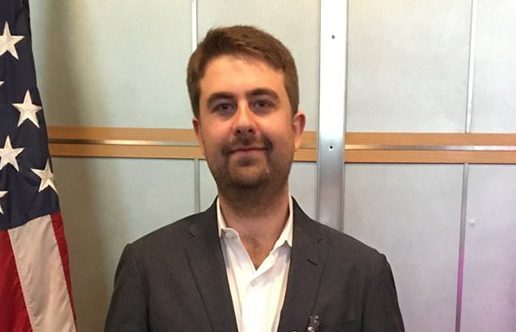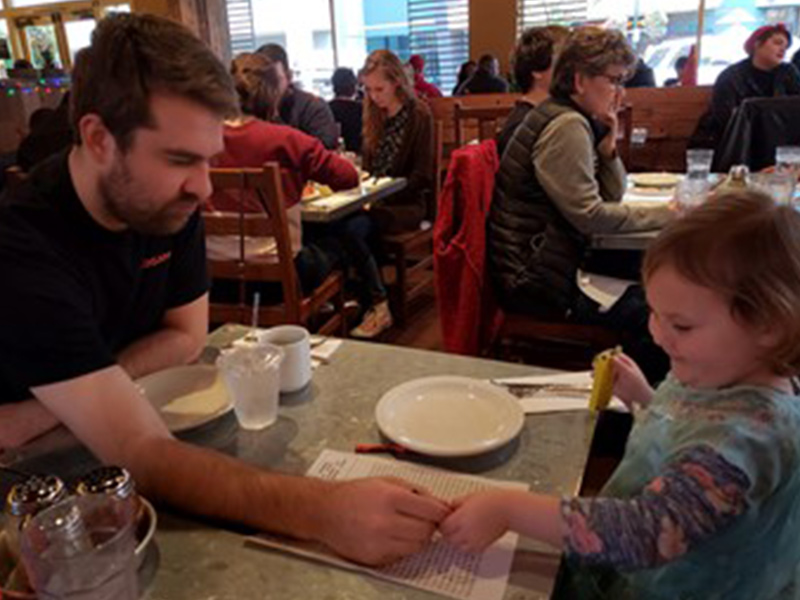
Dan Caselden
NASA Citizen Scientist
Pingree School, South Hamilton, MA
Rensselaer Polytechnic Institute
Computer Science
Johns Hopkins University
Security Informatics
The citizen science project Backyard Worlds was featured in an article that caught my attention one morning. It sounded more engaging than TV and more productive than video games. Desperate for a distraction on the exercise bike, I gave it a shot. When desired, citizen science projects can be convenient tools that consume idle brain cycles or eyeball time when we're otherwise not sufficiently engaged, such as short waits for transportation and couch time with a comfy second-rate horror movie. Other citizen scientists have shared this use case, with one explaining its role in her life as sometimes replacing knitting while watching movies.
My favorite is Backyard Worlds: Planet 9. The science team and fellow citizens all bring their own expertise to the table and give each other ample opportunity to learn while staying motivated. Since starting, I've gotten involved in back-end image processing and object detection, which is a fascinating problem. With WISE (a NASA space observatory), you have over 70 million tiny pieces of the sky that can each contain some new discovery. How do you find which pieces? And how do you present those pieces to a human so they can recognize – pick something out from the noise – when they're seeing it?
I'm a computer security researcher working at a computer security company. My role within the company is to find malicious activity on customer networks and improve our product's ability to do so automatically. If we forget that rows of network metadata logs originate from network packets, and rows of detections in astronomical catalogs originate from images, there's a fair amount of similarity between the two disciplines. When not working or doing astronomy, I cook and hang out with my wife and two daughters, press the wrong buttons and sing the wrong pitches before a piano, and demonstrate how bad I've become at video games.
This list is too long. I've learned skills that both make me a better citizen scientist and make me better at my job, such as the basics of web development, machine learning, and large-scale data processing. There's far too much to mention specific to astronomy, and particularly brown dwarfs and image processing.
I’ve contributed to a number of publications with Backyard Worlds: Planet 9 over the last few years! Many are listed on the Publications by NASA Citizen Scientists web page. My contributions have included building WiseView, a tool for interactively visualizing WISE images, with colleague Paul Westin; discovering one of the coldest brown dwarfs, WISE J0830+2837, with fellow citizen scientist Guillaume Colin; building a neural network for high proper motion object detection with colleagues Andrew White and Lindsey Lack and many of the group’s scientists; and stumbling upon and attempting to characterize the nightmare that is The Accident (read more about “The Accident” here and here).

My favorite paper to work on was the “Expanding the Y Dwarf Census with Spitzer Follow-up of the Coldest CatWISE Solar Neighborhood Discoveries” paper with the CatWISE team. Visiting IPAC (the Infrared Processing & Analysis Center, California Institute of Technology) was such a shock from the sterility of Silicon Valley office buildings. There, infrared photographs and mission clocks line the walls. The people are driven by understanding the universe. They also gave me my first dragon fruit—to date, the only dragon fruit I’ve tasted with any flavor.
I have a background in computer science but initially had absolutely no interest in space other than it being quite pretty at times. This project changed that. Working with driven people on hard problems is engaging. It’s easy to have fun solving difficult, albeit incremental, challenges in this environment. But along the way, I’ve become appreciative of the larger answers we’re working towards and invested in seeing the community progress.
There honestly hasn't been any one particular challenge to overcome. Instead, the process is a constant sequence of small challenges (and some frustrations when I break things by mistake or make false assumptions) toward our goals.
Try it! Try one out while waiting at the dentist or watching videos and see if you get hooked.
Our science team and fellow citizen scientists. I think we'd all peter out if it weren't for each other.
I make a great pizzelle and recently began coating a portion of the edges with chocolate and pistachio bits. I'd call it an improvement. These cookies are typically for bribery, such as when a colleague downloads fresh satellite imagery for me despite being at a party (or a colloquium, as they call it), or submits a grant proposal on behalf of my project. And karaoke. And Counter-Strike. These are a few of my favorite things.
Have you been part of a peer-reviewed publication from a NASA citizen science project? If so, we'd love to share your profile! Get started here.
Visit the complete collection of NASA citizen science projects and start contributing today!
Planetary science is a global profession.

